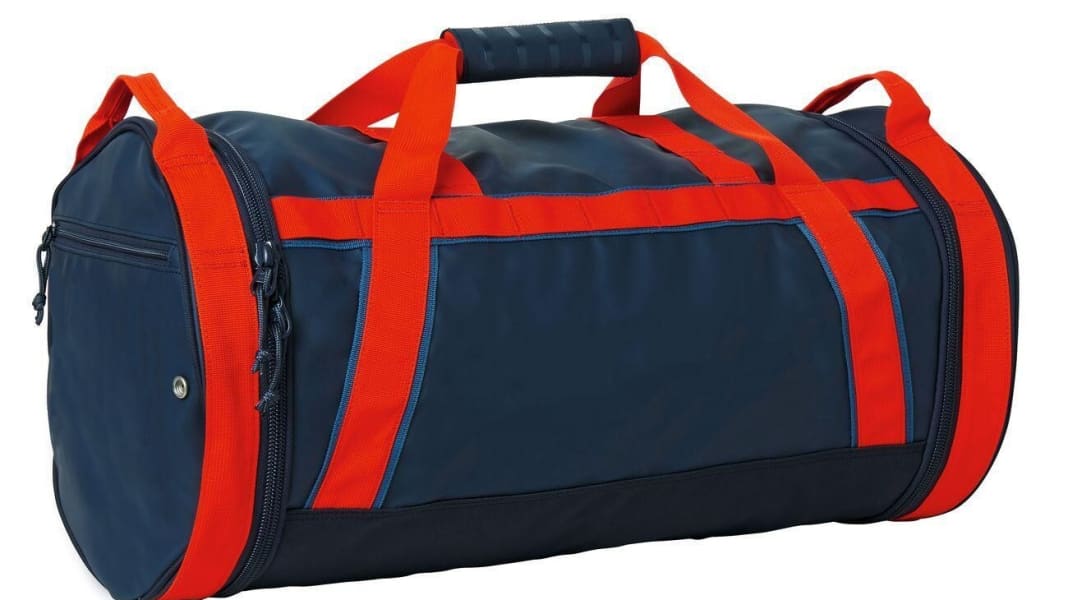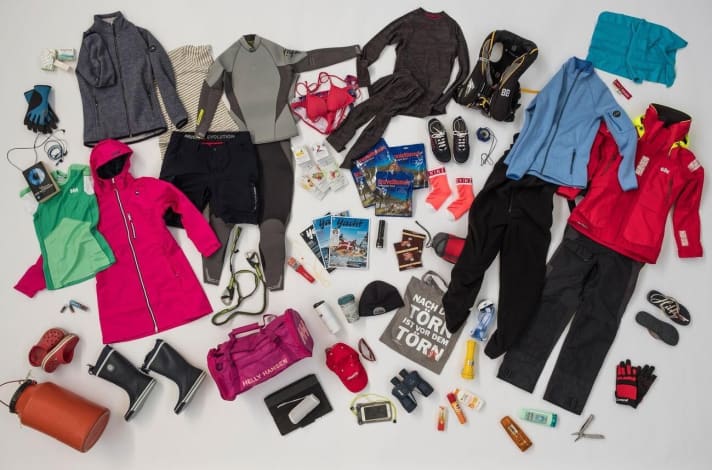Charter equipment: Everything you need in your sailing bag

Inexperienced sailors in particular are faced with the question of what equipment is really useful during the trip. Clothing, safety equipment, tools, medication, multimedia - what you really need on a sailing trip depends on several factors. How long should the trip last? When and where are you sailing to? What will the weather conditions be like?
Here are some recommendations from the editorial team.

Tests on some of the equipment mentioned can be found below the article.
Short trip coast
It doesn't take much to spend a day sailing along the coast in summer: in addition to single-layered Leisurewear is recommended Sturdy footwear. Sailing shoesshoes that are comfortable to wear, dry quickly and whose soles do not collect stones are in demand here.
Protection against the sun should also be provided during short trips. A simple Peaked cap protects the head, Sun cream the skin. With the Sunglasses certain quality features have proved their worth. They should be floatable and equipped with a polarising filter. It is definitely worth digging a little deeper into your pocket for special sailing goggles.
Gloves are also part of the reduced basic equipment. Simple and comparatively airy dinghy gloves are ideal for trimming the spinnaker sheet, for example. If you get cold quickly, you can also use warm, waterproof neoprene or even winter gloves.
Indispensable for every sailing stroke is the Lifejacket. For simple coastal cruising, a 150cm waistcoat with a correspondingly lower buoyancy force is ideal.
The safety of electronic devices is ensured, for example, by a Waterproof mobile phone cover.
Several days on the road
The equipment should be extended for weekend or holiday cruises. A Base layer (Baselayer) made of functional underwear stores body heat in colder temperatures.
The Middle class (midlayer) is worn over the base layer under the oilskin. Materials made from fleece and heat-retaining (merino) wool have proven particularly effective.
The right Oilskin is essential for a sailing trip lasting several days. But here too, the purchase decision depends on the type of trip. A lighter version is suitable for shorter sailing trips. Offshore equipment, on the other hand, is suitable for offshore sailing.
If the conditions are not exactly Caribbean, footwear is crucial. In adverse weather conditions Rubber boots. Whether you opt for short boots or high sailing boots is a matter of taste. Sailing boots with integrated gaiters provide the ultimate water protection from above. However, these are in a significantly higher price segment.
An (albeit reduced) Hygiene equipment also belongs in the duffle bag. A quick-drying, lightweight Travelling towel saves space and is available for comparatively little money in outdoor shops.
While the 150 lifejacket with less buoyancy is usually sufficient for shorter sailing trips, offshore sailing requires more safety on board. We recommend a 275 automatic waistcoat with more buoyancy, including spray cap.
In order to avoid a man-overboard manoeuvre, it is also advisable to use the Safety line required. An emergency transmitter can save lives in an emergency.
Good visibility is important. A strong Torch belongs on board.
Important additional equipment - Part 2
Important additional equipment
If you don't always book with the same charter company, you never really know what to expect on board: Is the plotter big enough and installed at the helm? Is the kitchen equipment meagre or top-notch? Are there proper cruising guides on the boat? Can the stereo system play music from a smartphone? Sometimes it's the little things that decide whether a holiday cruise is perfect or not. Over the years, YACHT has collected tips on what you should take with you on a charter cruise in addition to your personal equipment to be on the safe side. These items are shown in the gallery.






The skipper does not have to take care of the additional equipment alone - simply ask the crew who can bring what before setting off. If everything is spread over several shoulders, no-one will be overburdened by the weight limit for flight luggage.
Anyone who regularly goes on charter trips as a skipper is well advised to put together a grab bag with the appropriate additional equipment, which can be stored in the cupboard at home after each holiday and taken out again for the next trip. Alternatively, you can save the packing list on your smartphone.
As charter yachts often only have a permanently installed radio system below deck, the skipper has to go below to register in the harbour every time if no other crew member can or wants to use the radio. For this reason, many skippers take an additional handheld VHF radio with them on their cruise. But be careful, a German sailor is only allowed to operate this in this country if he has applied for a licence from the Federal Network Agency. However, charter sailors without their own boat cannot obtain this licence.
This is sometimes handled differently abroad. In any case, you should enquire about the regulations. Caution is advised in the Netherlands in particular. As radios there require a regional ATIS identifier, which is automatically transmitted when transmitting, the authorities notice as soon as someone transmits without a licence. This can result in hefty fines during inspections.
And in addition to the tip to stick a laminated VHF radio procedure chart to the bulkhead near the radio in case of an emergency: The same applies to watch plans for planned night voyages or for emergency roles, which assign tasks and procedures to the individual crew members. This may not be absolutely necessary for standard charter trips. However, if you want to play it safe or train for more demanding trips in the future, you can practise in this way.
In the age of smartphones and tablets on board, there are a number of apps that can prove useful on charter trips in addition to practical additional equipment. However, caution should be exercised with navigation programmes - in surveys, almost half of sailors now state that they have one installed on their smartphone. They are not always a good alternative to a chart plotter. The reason: the GPS receivers of tablets or mobile phones can have error margins of 100 to 300 metres, depending on the quality of the devices and below deck! In our experience, owners of premium smartphones are much safer than owners of mid-range products.
Some skippers also bring their own tool kits - at least if they are travelling by car. This may make sense for experienced craftsmen. However, the editorial team has found that the charter base often has acceptable replacements in stock if there are gaps in the tool sets. Simply ask for them before setting off.

